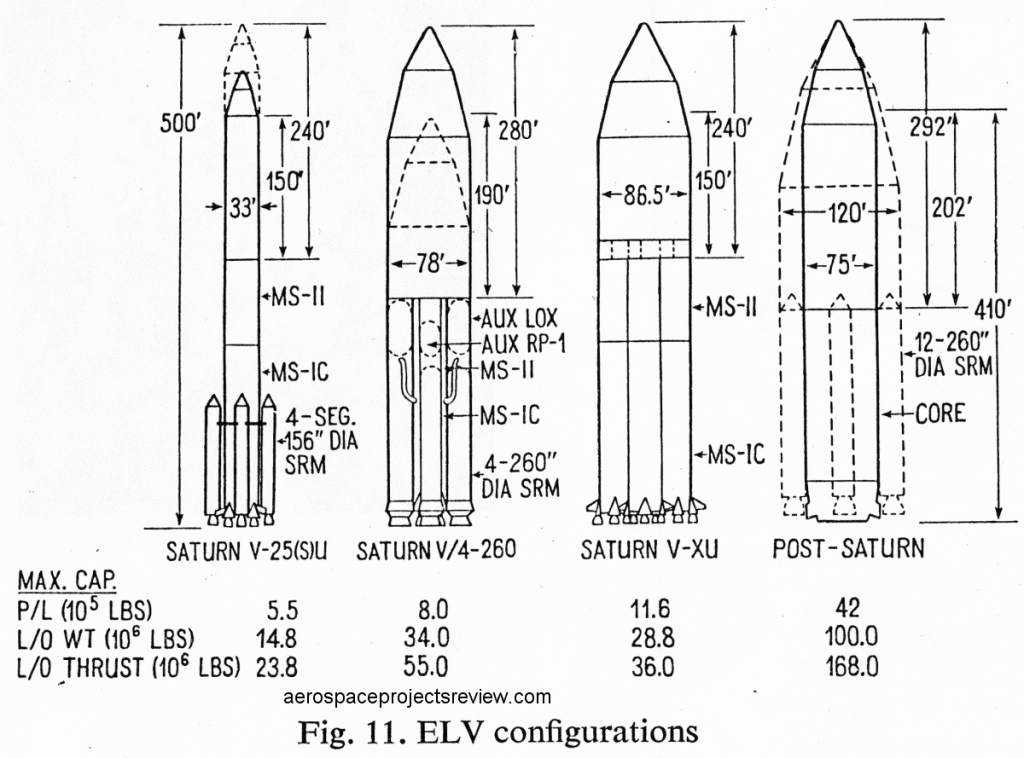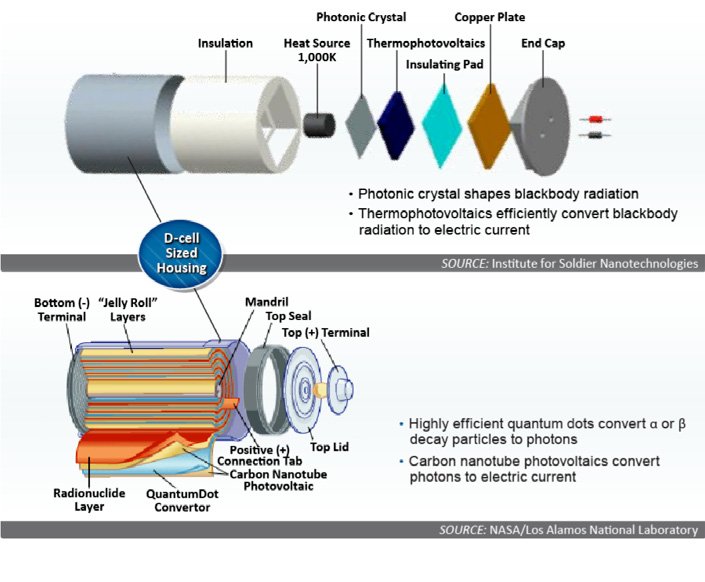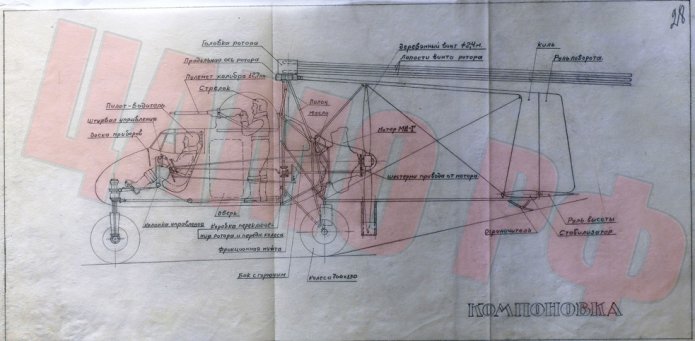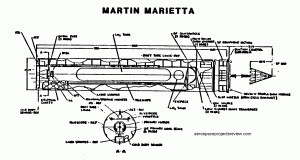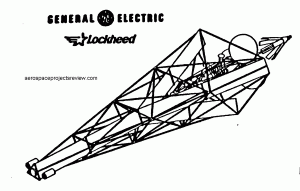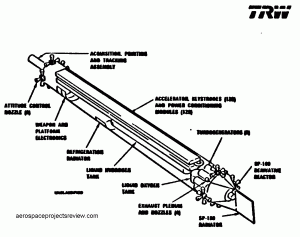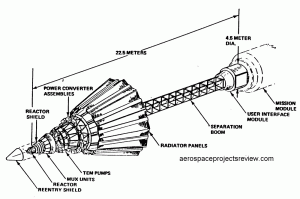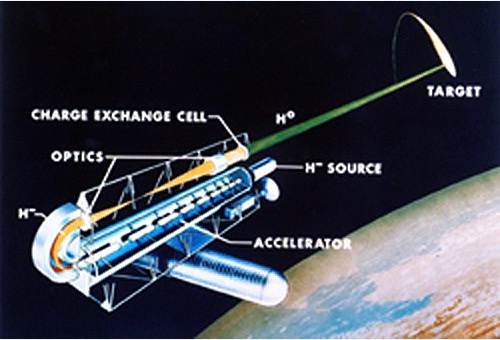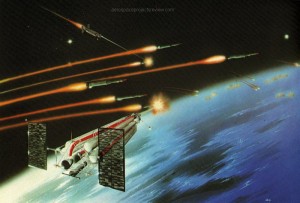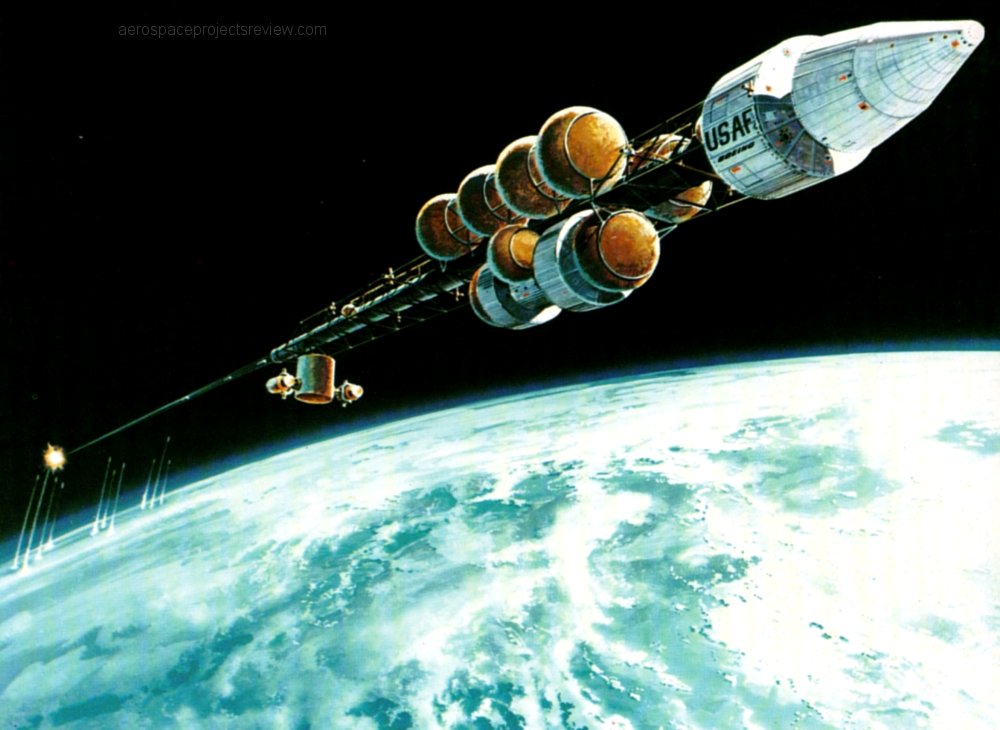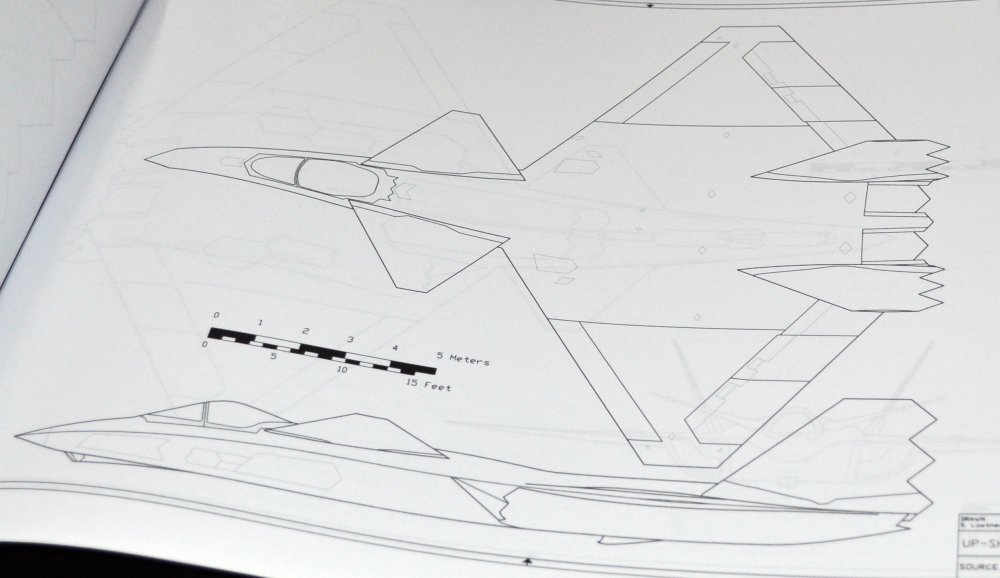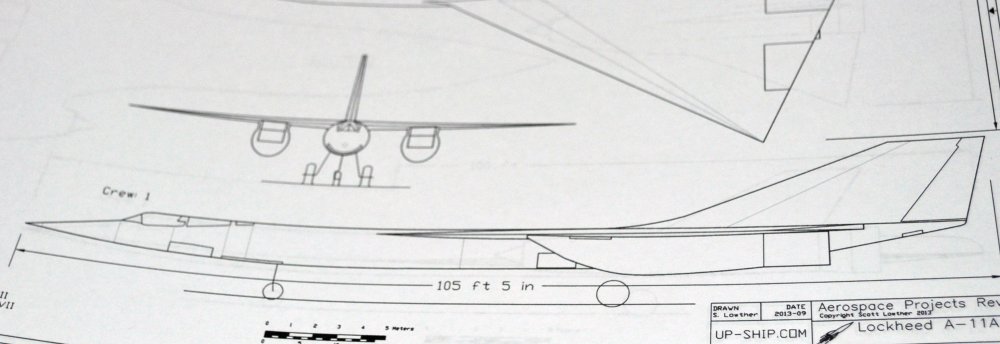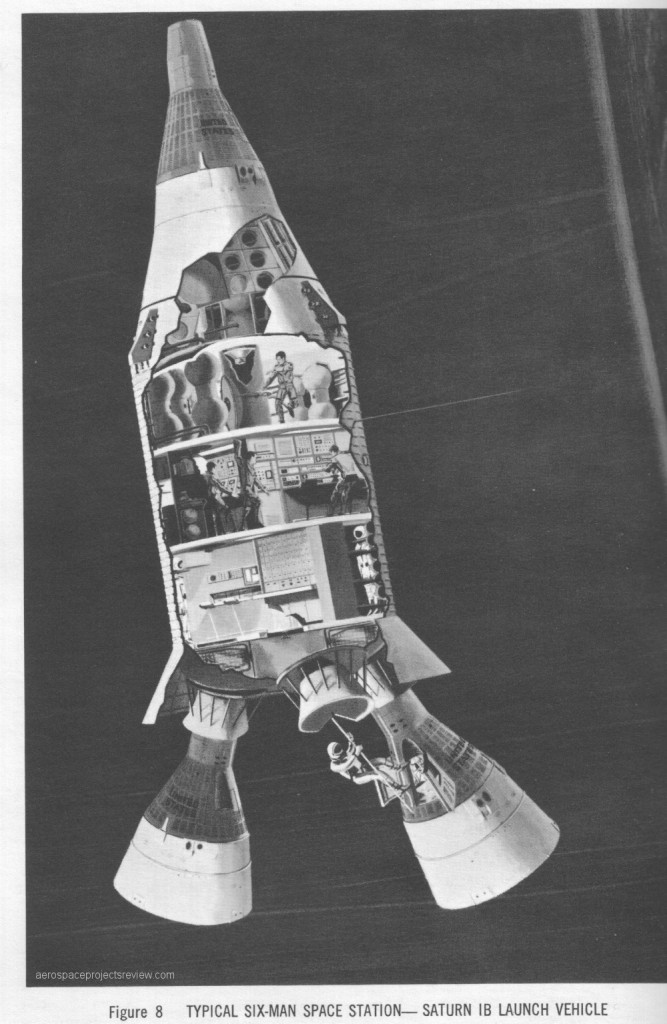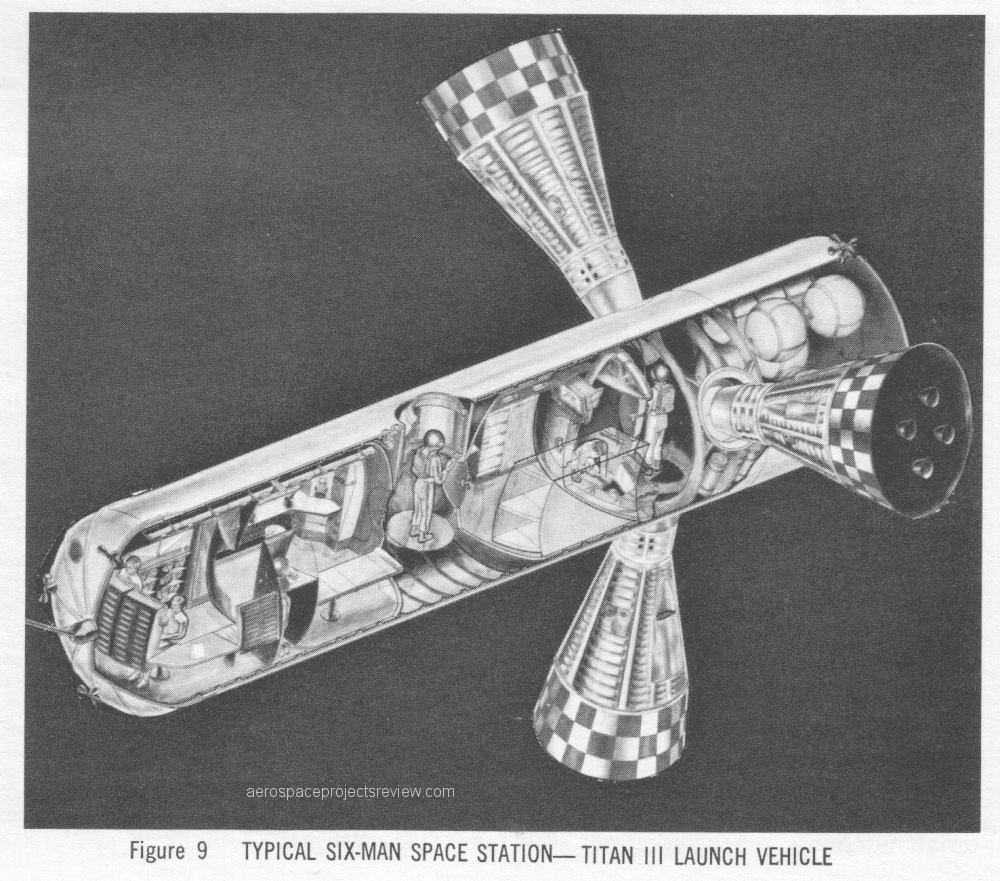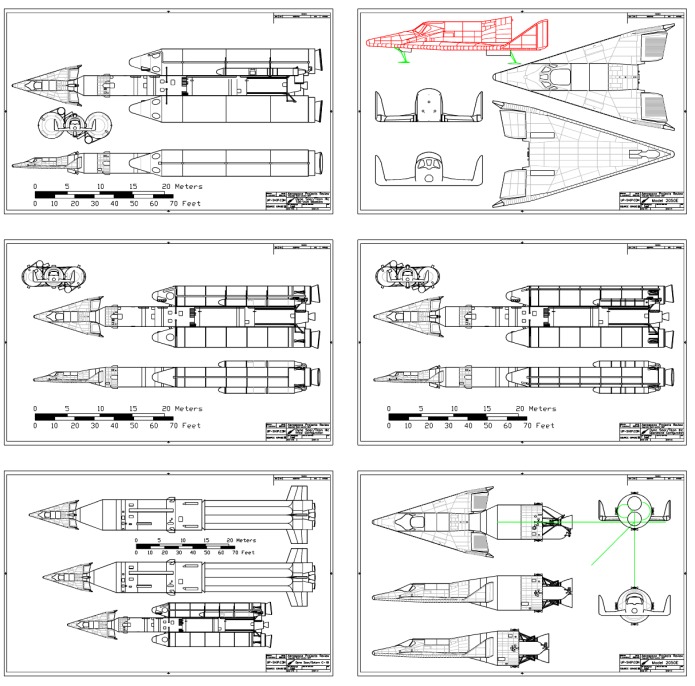In 1968, Boeing (manufacturer of the S-IC stage of the Saturn V) put out an illustration of advanced derivatives of the Saturn V. Published in the XIXth International Astronautical Congress, these included the Saturn V-25(S)U, which was a stretched Saturn V with improved F-1 and J-2 engines, with four 156″ diameter solid rocket boosters; the Saturn V/4-260, which used the same improved Saturn V, but with four 260″ diameter solid rocket boosters, with additional first stage liquid propellant in tankage ahead of the solid boosters. Additionally, the payload shroud could be increased in diameter from ten meters to 78 feet,and up to 290 feet in length. Further included was the Saturn V-XU, which was four improved Saturn V’s clustered together (both first and second stages), with a payload shroud 86.5 feet in diameter and 240 feet long; and an all-new Post-Saturn concept with a 75-foot-diameter core vehicle with optional 260″ diameter solid rocket boosters (up to twelve) and a payload shroud up to 120 feet in diameter. A payload of up to 4.2 million pounds was envisioned.
Two length options were shown… 410 feet and 500 feet. The 410 foot-long vehicles could be assembled within the VAB; the 500 foot-long vehicles would require that the payload be stacked onto the vehicle outside the VAB using a new crane mounted to the VAB roof.
